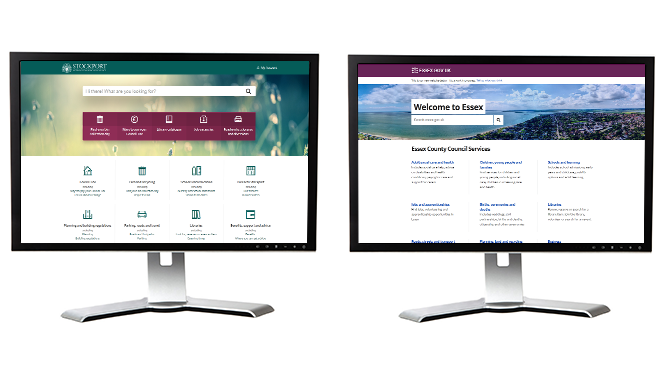When we signed the Digital Declaration we committed to share our learning experiences and open source our code and last October we joined up with Essex County Council on a collaborative project to create their new website. You can read more about the start of this project in the previous blog. Here, Helen West, Head Product Manager at Essex County Council, describes her experience of creating their new website from our Open Source platform.
Choosing a new Content Management System (CMS)
The first major project for the Service Design Team at Essex County Council was to deliver a new council website using the Government Digital Service Standards as our guide.
The vision for the site is to deliver ‘one site for Essex that meets the needs of citizens and delivers the best possible content and public services’. Part of this vision is to consolidate our significant web estate into essex.gov.uk to ease the findability issues that we identified in our Discovery phase and to be able to measure online end-to-end journeys more effectively.
We were keen to consider our technology options at the appropriate point in our project rather than taking a technology first approach. Stockport had come to our attention through the launch of the Local Digital Declaration and also the Open Days they were running. Given the drive for local authorities to collaborate we were keen to explore the potential of working closely with another authority and building on their learning.
I wrote about our work to choose the right platform on our Service Design blog back in November 2018.
We were committed to re-using as much of GOV.UK’s good practice standards and outputs as possible, including their prototyping kit. Stockport’s website has very similar GOV.UK style templates and delivering our desired presentation layer based on their content types seemed workable. This was validated during testing with our user panel and in our test lab. Users were positive about the simplicity of the proposed designs which, coupled with re-designed content, gave them a much clearer view of the services on offer and how to access them.
The decision was made. We were going with Stockport’s code.
Practicalities of using the open source code
As part of our assessment we did a rough proof of concept using Stockport’s code and the Contentful CMS which was really quick to spin up. There was sufficient documentation to follow and we engaged with the Stockport team when we needed to clarify something.
There was also a .NET 2.1 upgrade early on in our project and Stockport supplied their code changes which we used to update our own codebase. Again, this was quick to implement.
Customising the website
The work to make it our own has been largely centred on the presentation layer. We had a design review done which gave us our current look and feel and we created a design system to catalogue the components and elements. It was relatively straightforward to use Stockport’s content types and make the presentation layer our own.
Other changes that we made included:
- Using Azure cloud hosting rather than Amazon Web Services
- Pulling through meta descriptions into search results
- Embedding YouTube video rather than using Stockport’s video provider
Challenges
One of the main challenges is probably around support. We understand the code base enough to have delivered the website but we’ve had to ask Stockport questions along the way and they’re not a vendor. They have however been really responsive.
Using Stockport’s code assumes that they’ve made all the right decisions about how the website is architected and moving away from that would mean we were effectively managing a custom build. The Contentful CMS has new features such as a Rich Text Editor which Stockport aren’t using. Now that we’re live we’re keen to have some meaningful conversations about our respective plans and direction of travel.
Stockport use Amazon Web Services as their cloud hosting solution whereas we use Azure. There isn’t a like for like set up and the delays that we had in delivery were mainly due to setting up the Content Delivery Network in Azure.
Benefits:
We’ve used Stockport’s code to replace an out-of-date website with one that’s responsive and designed with users in mind. Google Tag Manager data suggests that there’s already a really positive picture emerging with increased user engagement and a reduction in bounce rates.
I’d also say that it’s been one of the smoothest web projects that I’ve ever been part of. Some of this was the way we managed it, but part of it was also the solution.
Considering we replaced developers mid-way through the project, they were able to pick up the code and work with it in a relatively short timeframe, as well as having to simultaneously manage some business as usual activities.
It’s been a really positive experience working with the Stockport team. It’s great to be able to engage with another organisation in this way and to talk through common challenges.
What’s next
We’re looking at the next set of content types that we want to enable in the solution. We’ve started to look at Smart Questions which can be used to check transactional eligibility and route users to the right content.
For regular updates from the #DigitalStockport blog sign up for email alerts.

